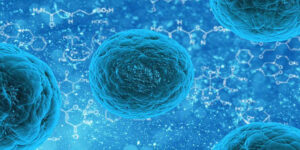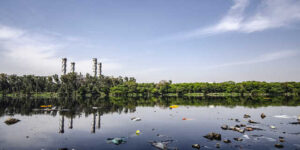Myths About Water Pollution: Water pollution is a major threat to human well-being as it has limited the amount of ecosystem services, people get from clean water sources. This is a major environmental problem everywhere in the world but there are some myths and misinformation surrounding this whole problem of water pollution.
1. Clear water is clean water.
This is a common misconception and the fact is that water can contain soluble chemical and biological contaminants that can’t be seen with the naked eye. Some of the notorious water pollutants are biological pollutants. These are pathogens (bacteria, protozoa, viruses) and these cannot be seen with our naked eyes even at close observation. These need special lab equipment to be able to detect them and will cause disease when ingested. The chemical pollutants too may be undetectable in low amounts and when ingested can cause health implications to humans.
2. Water pollution is only caused by discharges at point sources.
The fact is that water pollution can also occur through non-point sources, and these are diffuse sources which cannot easily be detected. Pollution of water can easily occur through seepage of contaminants into the underground water as a result of human activities above the water table. Studies have found Nitrates to be present in underground water, meaning they leached into the underground aquifers. Water pollution can also occur through transboundary movement of pollutants. Studies conducted have shown that pollutants are able to be swept by wind currents for thousands of miles from where the pollution originally occurred.
3. Polluted water has no use.
The fact is polluted water can become a very useful resource if treated properly using the conventional waste water treatment processes. This water can be treated and be fit for human consumption or be useful to other sectors of the economy like Agriculture when the water is used for Agriculture. Water treatment is now becoming a very crucial process in all economies because the water resources available can longer cater for the rapidly growing populations so there is need to treat and re-use water.
4. Water pollution does not contaminate food.
In most developing countries, untreated wastewater is sometimes used to irrigate crops because of its high organic matter content and people would assume that it’s safe because it’s just biodegradable organic matter.
The fact is that the polluted water has the ability to contaminate the food chain. This is because waste water is also full of other contaminants for example heavy metals like Mercury, dissolved solids, pathogens, synthetic compounds, acids and bases etc. When this contaminated water is used for crop production, crops will take up these heavy metals and store them in their tissues which when consumed will lead to health complications in humans. Bioaccumulation and biomagnification of toxic metals and plastics also occurs in aquatic life.
5. Water pollution only occurs in one stage of the water cycle.
The water cycle is crucial in providing for a continuous flow of water in the ecosystem. There’s a common myth that pollutants only get into water when already in liquid form i.e. in the precipitated form.
The fact is that pollutants can degrade the water quality even in gaseous and solid form. Some pollutants will precipitate and attach to clouds and when it rains, all the pollutants find their way into water sources. Some contaminants can also attach to frozen ice and only get released into the environment when the ice melts.
6. You can only get sick if you ingest polluted water.
There is no denying that there are numerous waterborne diseases associated with water pollution. While it’s very true that you can get sick by drinking polluted water, is it really the only way polluted water can make you sick? Not really, we said earlier that polluted water also has biological contaminants that live in the water and these biological contaminants can get into the body through the skin. These water based invertebrates enter into the body through the skin when someone is in contact with water that has this invertebrate. They will cause diseases like Bilharzia which for sure isn’t gotten by drinking polluted water. These are some of the myths about Water Pollution.
7. The misconception that water pollution is mainly from industrial activities.
The fact is that water pollution has many sources. There are other notorious water pollutants like domestic sewage including stormwater runoff from cities, which is usually discharged into the environment without any treatment. The agricultural industry is also one of the major sectors that pollute water greatly. From polluting using fertilizers to polluting by sedimentation and heavy metals, agriculture has received a lot of attention as a major polluting sector. These are some of the myths about Water Pollution.
8. Open defecation in dry areas does not pollute water (Myths About Water Pollution)
In developing countries where sanitation is a problem, many people turn to open defecation. Most people in dry areas tend to believe that by defecating in the open, the sun will dry out the faecal matter and thus will not pollute the environment.
The fact is that even though the sun dries the faecal matter on the ground, when the rains come, all these dry faecal matter will be washed off into water sources by surface run off. Whatever pathogens were present will be activated in the water thus polluting the water source so there is a dire need for proper sanitation in these areas.
9. There are floating plastic garbage islands in most oceans around the world.
There’s a false idea that there are floating plastic garbage islands on every ocean out there. According to the National Geographic the fact is that most of the oceanic waste is actually in form of tiny microplastics suspended in water. These microplastics can’t even be seen by the naked eye but with Remote Sensing software. The plastic garbage that is dumped in the ocean breaks down into tiny microplastics with time and is left suspended in the water for years and years. These are some of the myths about Water Pollution.
10. Most water pollutants in oceans, seas and lakes mainly float on the water surface.
Another false narrative is that most of the wastes dumped in the ocean are the physical floating waste that is visible to the human eye. Oceanographers have actually confirmed that 70% of the oceanic waste has settled at the bottom of the ocean. Most of the marine debris either sinks to the seafloor or is eaten up by marine life or just traps sea life.
These are some of the myths about Water Pollution.
Image by Sergei Tokmakov, Esq. from Pixabay






